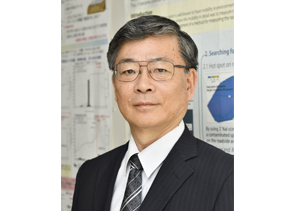Urade, Yoshihiro
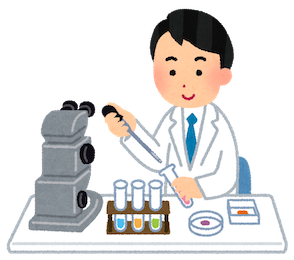
Urade, Yoshihiro
Project Researcher
Musashi University, adjunct faculty member (2023)
Daiichi University of Pharmacy, Department of Pharmacy, Center for Supporting Pharmaceutical Education, Professor(2020~2021)
Osaka Medical and Pharmaceutical University, Department of Pharmacy, Visiting researcher(2020~)
Laboratory head of Hirono satellite of radioisotope research center
- http://jkg-energy.co.jp/wordpress/wp-content/uploads/2022/12/La%E6%9A%AE075_2212.pdf
- https://www.a.u-tokyo.ac.jp/topics/topics_20190214-1.html
- TBS「夢の扉+」12月27日OA 番組の未放送映像
Areas of expertise
Radioisotope tracers, Sleep science, Biochemistry, Enzymology, Drug development, Bioactive lipids, Prostaglandin D2
Description of my research
Hirono Satellite, The University of Tokyo Isotope Center
Establishment of Hirono Satellite
In April 2022, the University of Tokyo Isotope Center Hirono Satellite was established in Hirono-machi, Futaba-gun, Fukushima Prefecture, based on the "Agreement on Collaboration and Cooperation in Drug Development between the University of Tokyo and Hirono Town" (Figure 1). Hirono is located in the "Hamadori (Seaside)" area of Fukushima Prefecture, where the entire population was evacuated due to radioactive contamination caused by the March 2011 hydrogen explosion accident at the Fukushima Daiichi Nuclear Power Plant of Tokyo Electric Power Company, Incorporated. Although the entire "Hamadori" area has not yet returned to its residents, Hirono Town was the earliest town to achieve this goal, as it was at the forefront of the decontamination work. The University of Tokyo Radioisotope Center participated in the radioactive contamination survey and decontamination work in the area and is expected to continue contributing to the "Hometown Reconstruction and Creation" project. The laboratory in the "Miraikan (Future house)" cultural exchange facility in Hirono (Figure 2) and the alpaca research facility in Futatsunuma General Park in Hirono (Figures 3 and 4) are playing a central role in the development of radiopharmaceuticals, sleep health studies for residents, and lectures for adult universities and youth.
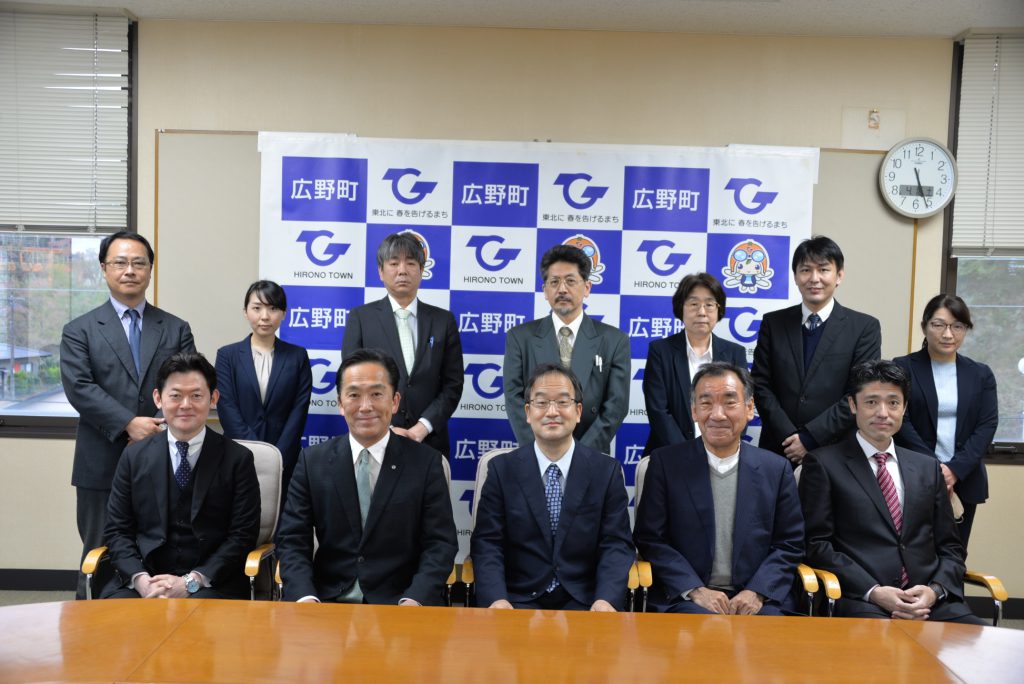
Mayor Mr. Satoshi Endo (front row, second from left), Center Director Dr. Yoshio Takahashi (front row, center) and myself (front row, second from right)
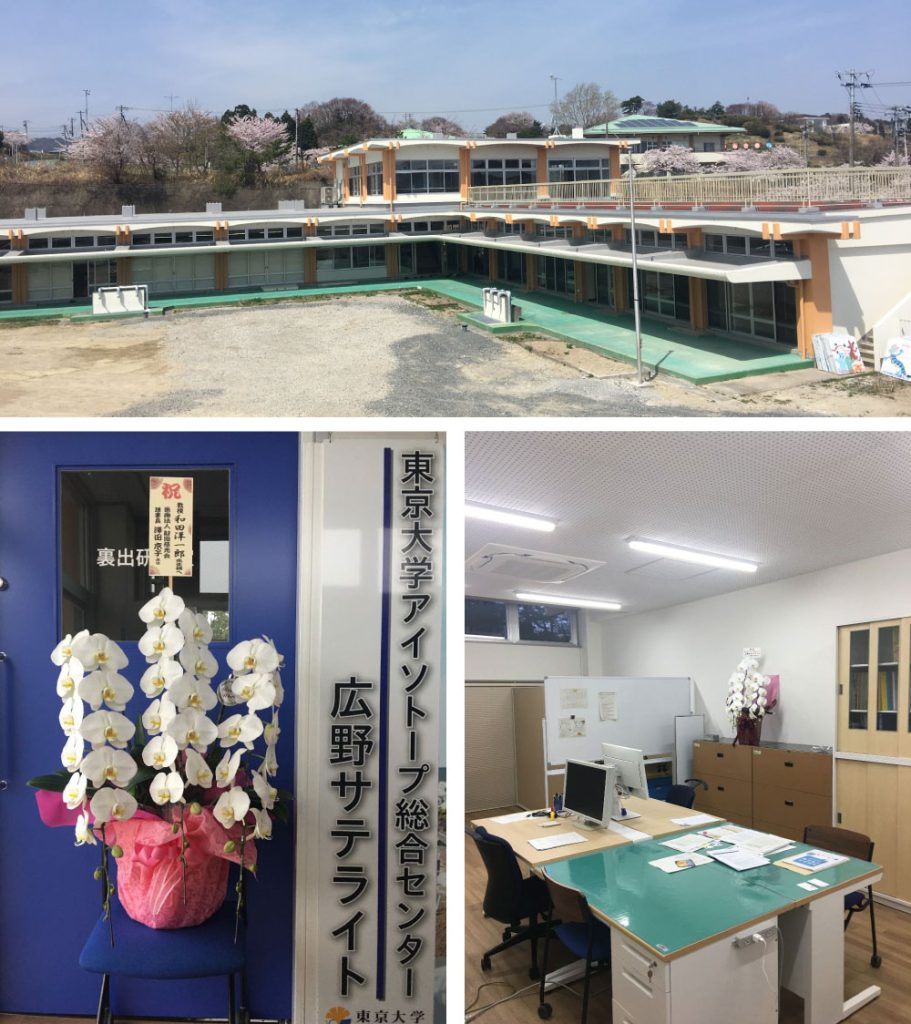
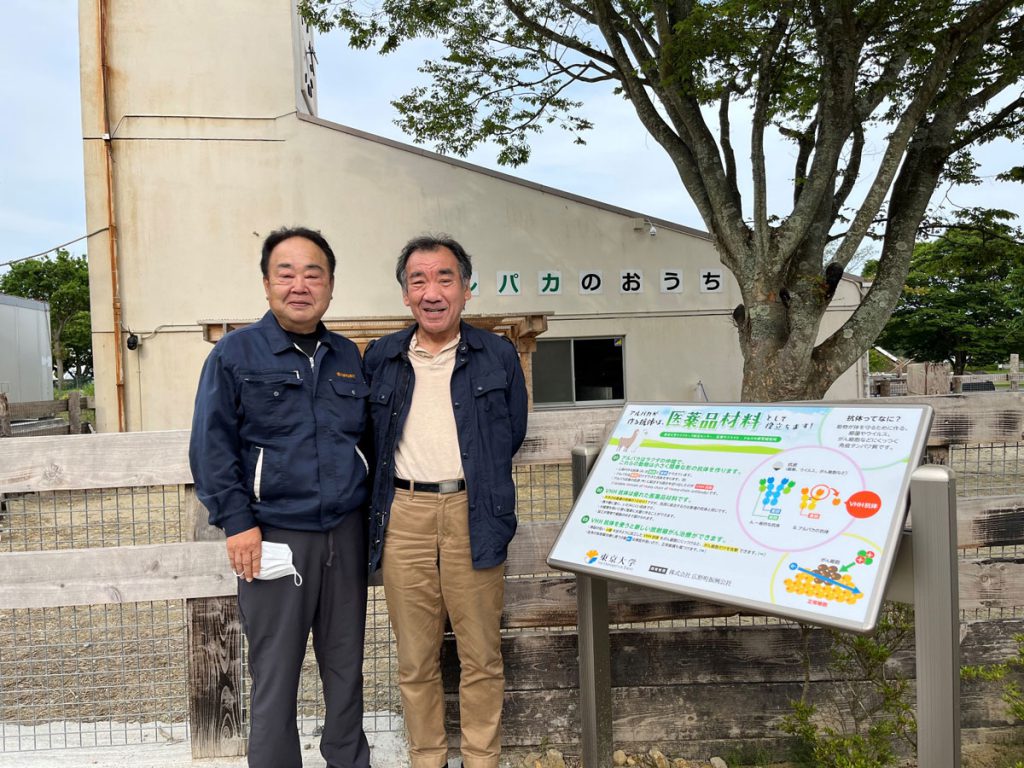
Mr. Hirofumi Nakatsu (left), representative director of Hirono Town Promotion Public Corporation, which is the contract breeder of alpacas, and myself (right).

Hirono Satellite's Role in Fukushima Reconstruction and Creation
The decommissioning of the Fukushima Daiichi Nuclear Power Plant will require decades of continuous radiation control and new technologies to handle various radioactive materials. 25 years of research by one generation of researchers means that two generations of experts in radiation research must be trained and maintained. Although radioactive materials have contributed greatly to the advancement of science and our understanding of life reactions, the number of specialized research facilities equipped with radiation analysis equipment has been decreasing due to the complexity of handling these materials. However, for the decommissioning of nuclear reactors and reconstruction and creation work in the affected areas, it is necessary to develop easy-to-use radiation measurement devices and simple radiation shielding devices, and continue to provide opportunities for the public to correctly understand radiation for decades to come. In order for the radiation industry to take root in areas hit by radiation disasters, it is necessary to continue disseminating correct understanding of radiation to society. This effort is necessary to prevent harmful rumors about radiation. To this end, we must provide opportunities to make radiation education accessible to everyone from elementary school students to adults. I will be stationed at the Hirono Satellite Laboratory to provide a place for local residents to learn about radiation and science, and contribute to the development of an educational environment for the children and youth of the next generation in "Hamadori.
Functional Analysis of Prostaglandin (PG) D2 and Drug Development
PGD2 is involved in sleep and inflammation
PG is produced from unsaturated fatty acids such as arachidonic acid as a local hormone during inflammation, and is involved in fever and pain by inducing various cytokines and chemokines. Five main types of PGs are produced in the body: PGD2, PGE2, PGF2a, PGI2, and thromboxane (TX) A2 (Figure 5), and are involved in a variety of pathophysiological functions. Non-steroidal anti-inflammatory drugs (NSAIDs) such as aspirin and indomethacin, which are used as antipyretic and analgesic agents, inhibit the synthesis of these substances.
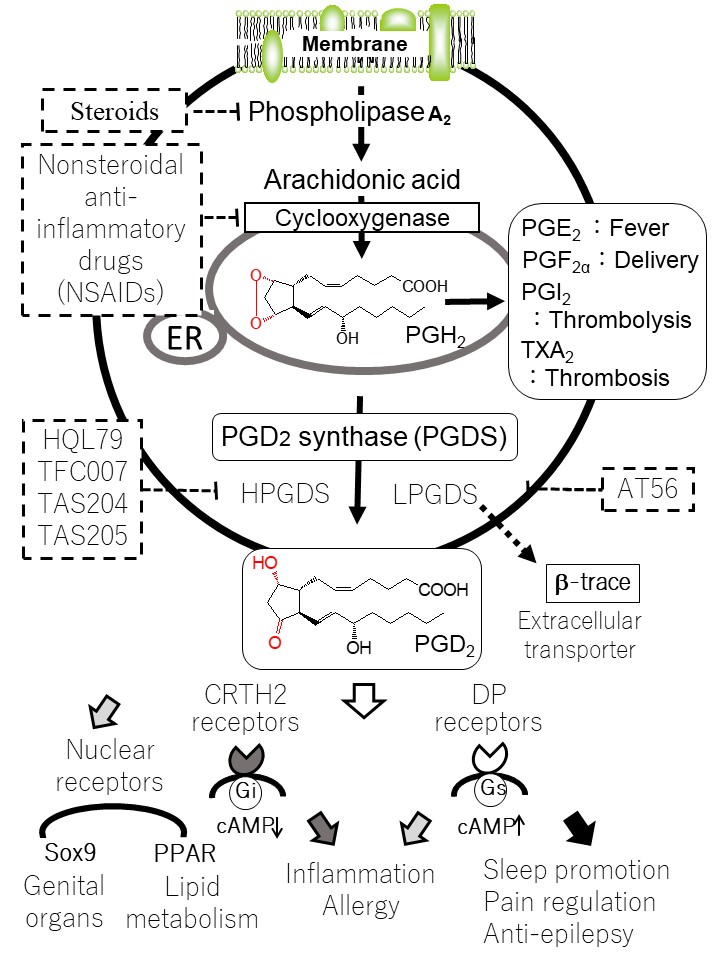
Two types of synthases and two types of receptors involved in PGD2
My life's work has focused on PGD2, which is actively produced in mast cells and the brain and is involved in allergic reactions and sleep regulation. Two types of enzymes are involved in its synthesis: hematopoietic PGD synthase (HPGDS) and lipocalin-type PGD synthase (LPGDS) (Figure 6). HPGDS is a homo dimeric protein belonging to the sigma class of glutathione transferases, while LPGDS is a monomeric glycoprotein belonging to the lipocalin gene family, which is composed of secretory proteins for extracellular transport of hydrophobic low molecular weight substances. There is no similarity in the amino acid sequence or gene sequence of the two enzymes, and they are related by "functional convergence," having evolved from different ancestors into enzymes with the same function. I have purified both enzymes, cloned their cDNAs and genes, analyzed their crystal structures, developed inhibitors, and generated gene-deficient mice and mice with high expression of the human enzyme and floxed mice. In addition, we used gene-deficient and floxed mice for two types of receptors involved in PGD2 signaling (DP and CRTH2) to elucidate the physiological effects involving PGD2 (Chem Rev 2011;111:5821).
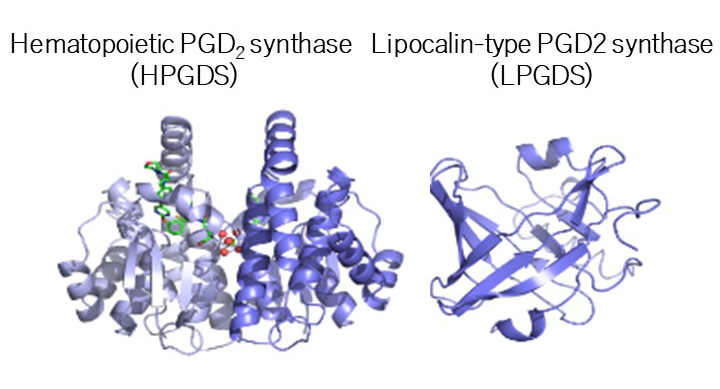
Molecular Mechanisms of Sleep-Wake Regulation and Industrial Applications
LPGDS produces PGD2 in the central nervous system, including the brain, spinal cord, and retina, as well as in the male reproductive organs and human heart. And it was found to be the same as β-trace, a known mystery protein in human cerebrospinal fluid (Front Physiol 2021;12:718002). PGD2, still the most potent endogenous sleep substance, is made by LPGDS in the brain and induces sleep via DP receptors. Studies on the mechanism of sleep induction by PGD2 have led to the identification of sleep centers in the brain (VLPO and NAc). We found that adenosine transmits PGD2 sleep information to the brain and that caffeine antagonizes adenosine A2A receptors and has arousal effects (Sleep Med Rev 2011;15:411). The animal sleep measurement devices and sleep analysis software "SleepSign" developed for these studies are used in laboratories around the world and in the development of various sleep supplements. Based on its many years of experience in sleep research, the company is also actively involved in various educational activities related to sleep. Its research has been introduced on TBS "Yume no Tobira (Door to Dream)" (broadcast on December 27, 2015), NHK E-television's "Be to Wakasa no Shinjyoshiki - Karada no Himitsu (New common sense for Beuty and Youth, Secret in Our Body)" (broadcast on July 13, 2017), NHK "Chiko Chan ni Shikarareru" (broadcast on July 26, 2019), and others.
Development of Muscular Dystrophy Drugs
HPGDS is distributed in mast cells, tissue macrophages, Kupffer cellsin the liver, immune dendritic cells, antigen-presenting cells such as Langerhans cells in the skin, activated Th2 lymphocytes, brain microglia, and Tuft cells in the digestive organs, and is involved in allergies, asthma, and other diseases. It is also induced in Alzheimer's disease, amyotrophic lateral sclerosis, demyelinating diseases, spinal cord injury, polymyositis, Duchenne muscular dystrophy (DMD), and other intractable diseases, and is involved in disease progression.
DMD is a dystrophin deficiency caused by mutations in the dystrophin gene, a skeletal muscle protein located on the X sex chromosome. It is the most frequent form of muscular dystrophy, occurring in 1 in 3,500 live births of boys of all races. Most of the patients begin to have rapid muscle atrophy around the age of 4 year-old, require a wheelchair around the age of 10, wear a ventilator around the age of 20, and die around the age of 40 due to heart failure or other causes.
We found that HPGDS inhibitors inhibit muscle degeneration in DMD mice, determined the X-ray crystal structure of inhibitor-bound HPGDS, and developed the potent inhibitors TAS204 (patent 4986853) and TAS205 (patent 5111657). We demonstrated that TAS204 administration maintains the exercise function of DMD beagle dogs for more than 18 months. In 2020, we have initiated a Phase III clinical trial of TAS205 in DMD patients. These results were introduced on the websites of JAXA, NASA, and Boeing, which supported the space experiment of protein crystallization, and on Youtube under the title of "Benefits for Humanity: Hope Crystallizes (Figure 7)" and were shown on NHK E-TV's Science View ~ Ms. Naoko Yamazaki (a female Japanese astronaut) talks about the world of Zero Gravity 2" and has been broadcast many times (re-broadcast 8/31/2016), giving great hope to DMD patients and their families.
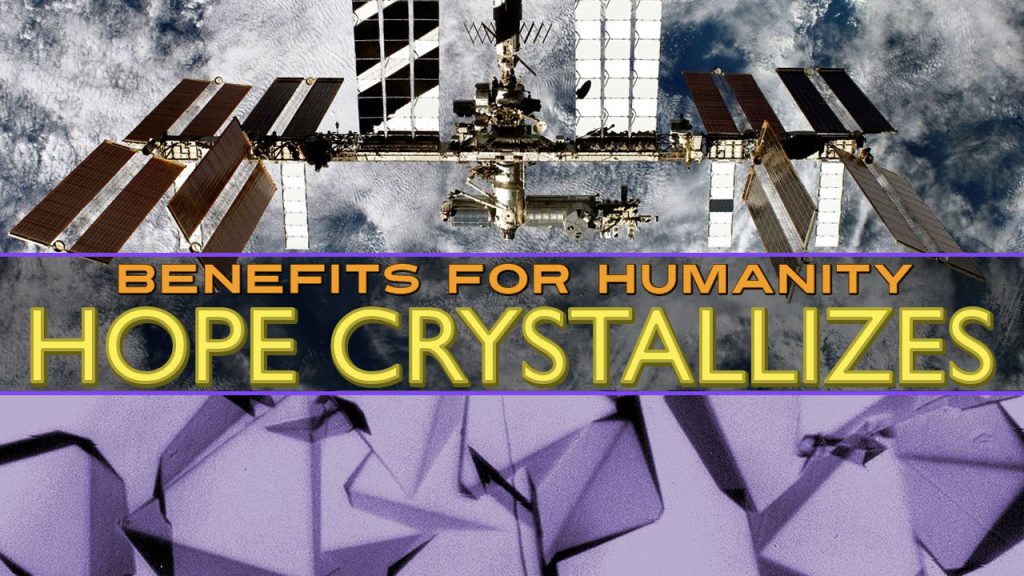
We want to bring the drug to muscular dystrophy patients all over the world!
Furthermore, we found that CRTH2 receptor antagonists inhibit muscle atrophy in DMD even at doses that are a few tenths of those of HPGDS inhibitors. We also found that when CRTH2 receptor antagonists were administered simultaneously with HPGDS inhibitors and NSAIDs, which suppress PGD2 production, the suppression of muscle atrophy was markedly enhanced. We have succeeded in suppressing muscle atrophy in DMD mice by using a fixed-dose combination of aspirin, which has a history of more than 100 years as an antipyretic analgesic, and ramatroban, a generic nasal obstruction treatment with CRTH2 receptor antagonist (patent pending). Currently, exon-skipping drugs that read off mutant exons in the dystrophin gene are being developed around the world. However, these drugs can only treat about 10% of patients with mutations in the same exon. Moreover, because it is a high molecular weight nucleic acid drug, it requires regular hospitalization and intravenous infusion, and there is a risk of renal dysfunction due to long-term administration. They also carry the risk of producing antibodies against the newly created dystrophin protein in the patient's body. Our drug, on the other hand, can be administered orally at home to all DMD patients, regardless of the location of the mutation. The therapy using aspirin and ramatroban is extremely inexpensive and safe, and has the potential to be used to treat DMD patients worldwide, including those in countries that cannot afford the high cost of medical care. We would very much appreciate your support for its practical application.
Competitive research funds for this research
- 2021-2023 Fundamental Research (C) (General) 21K09681 "Involvement of prostaglandin D2 in inflammatory retinal choroidal diseases" (Principal Investigator: Toshikatsu Kabushiro)
- 2019-2020 AMED Seeds Research A: Combination of Inhibition of Prostaglandin D2 Production and Blockade of Signal Transduction to Reduce the Breakthrough Progression of Muscular Dystrophy (Principal Investigator)
List of publications on radiation research
- Soga H, Inoue T, Urade Y, Ueta T, Kawashima H, Kaburaki T, Aihara M. Attenuation of laser-induced choroidal neovascularization by blockade of prostaglandin D2 receptor 2. Transl Vis Sci Technol. 2023;in press.
- Pan L, Trimarco A, Zhang A J, Fujimori K, Urade Y, Sun L O, Taveggia C, Zhang Y. Oligodendrocyte-lineage cell exocytosis and L-type prostaglandin D synthase promote oligodendrocyte development and myelination. eLife 2023;12:e77441. doi:10.7554/eLife.77441.
- Shimizu T, Taguchi A, Higashijima Y, Kanki Y, Nakaki R, Urade Y, Wada Y. Inhibition of cardiac PERK signaling promotes peripartum cardiac dysfunction. Sci Rep. 2021;11(1):18687. doi: 10.1038/s41598-021-98344-7.
- Shimamoto S, Nakagawa Y, Hidaka Y, Maruno T, Kobayashi Y, Kawahara K, Yoshida T, Ohkubo T, Aritake K, Kaushik MK, Urade Y. Substrate-induced product-release mechanism of lipocalin-type prostaglandin D synthase. Biochem Biophys Res Commun. 2021;569:66-71. doi: 10.1016/j.bbrc.2021.06.092. Epub 2021 Jul 5.
- Suzuki N, Ko-Mitamura E P, Inui T, Terada T, Dejima K, Nagata N, Urade Y, Kawata R. Steroids inhibit eosinophil accumulation and downregulate hematopoietic chemotaxic prostaglandin D2 receptor in aspirin-exacerbated respiratory disease. Ear Nose Throat J. 2021;100(5_suppl):738S-745S. doi: 10.1177/0145561320902858.
- Shirahama S, Taniue K, Mitsutomi S, Tanaka R, Kaburaki T, Sato T, Takeuchi M, Kawashima H, Urade Y, Aihara M, Akimitsu N. Human U90926 orthologous long non-coding RNA as a novel biomarker for visual prognosis in herpes simplex virus type-1 induced acute retinal necrosis. Sci Rep. 2021;11(1):12164. doi: 10.1038/s41598-021-91340-x.
- Kaushik MK, Aritake K, Cherasse Y, Imanishi A, Kanbayashi T, Urade Y, Yanagisawa M. Induction of narcolepsy-like symptoms by orexin receptor antagonists in mice. Sleep. 2021:zsab043. doi: 10.1093/sleep/zsab043.
- Shimizu T, Higashijima Y, Kanki Y, Nakaki R, Kawamura T, Urade Y, Wada Y. PERK inhibition attenuates vascular remodeling in pulmonary arterial hypertension caused by BMPR2 mutation. Sci Signal. 2021;14(667):eabb3616. doi: 10.1126/scisignal.abb3616.
- Ouhaddi Y, Najar M, Lussier B, Kapoor M, Urade Y, Benderdour M, Pelletier J-P, Martel P J, Fahmi H. L-PGDS deficiency accelerated the development of naturally occurring age-related osteoarthritis. Aging (Albany NY) 2020;12. doi: 10.18632/aging.202367.
- Wang P, Li Q, Dong X, An H, Li J, Zhao L, Yan H, Aritake K, Huang Z, Strohl KP, Urade Y, Zhang J, Han F. Lipocalin-type prostaglandin D synthase levels increase in patients with narcolepsy and idiopathic hypersomnia. Sleep 2020;zsaa234. doi: 10.1093/sleep/zsaa234.
- Shirahama S., Onoguchi-Mizutani R., Kawata K., Taniue K., Miki A., Kato A., Kawaguchi Y., Tanaka R., Kaburaki T., Kawashima H., Urade Y., Aihara M. Akimitsu N. (2020) Long noncoding RNA U90926 is crucial for herpes simplex virus type 1 proliferation in murine retinal photoreceptor cells. Sci Rep 2020;10(1):19406. doi: 10.1038/s41598-020-76450-2.
- DelGiorno K E, Chung C-Y, Vavinskaya V, Maurer H C, Novak S W, Lytle N K, Ma Z, Giraddi R R, Wang D, Fang L, Naeem R F, Andrade L R, Ali W H, Tseng H, Tsui C, Gubbala V B, Ridinger-Saison M, Ohmoto M, Erikson G A, O'Connor C, Shokhirev M N, Hah N, Urade Y, Matsumoto I, Kaech S M, Singh P K, Manor U, Olive K P, Wahl G M. Tuft cells inhibit pancreatic tumorigenesis in mice by producing prostaglandin D2. Gastroenterology 2020;159(5):1866-1881.e8. doi: 10.1053/j.gastro.2020.07.037.
- Kawaguchi C, Shintani N, Hayata-Takano A, Hatanaka M, Kuromi A, Isojima Y, Nagai K, Sugimoto Y, Ichikawa A, Okuno Y, Urade Y, Hirai H, Nagata K, Nakamura M, Narumiya S, Nakazawa T, Kasai A, Ago Y, Takuma K, Baba A, Hashimoto Hitoshi. L-PGDS and CRTH2 are implicated in phase advance of central circadian rhythm. Commun. Biol. 2020;3(1):557. doi: 10.1038/s42003-020-01281-w.
- Jia D, Bai P, Wan N, Liu J, Zhu Q, He Y, Chen G, Wang J, Chen H, Wang C, Lyu A, Lazarus M, Su Y, Urade Y, Yu Y, Zhang J, Shen Y. Niacin attenuates pulmonary hypertension through H-PGDS in macrophages. Circ Res. 2020;127:1323–1336. doi: 10.1161/CIRCRESAHA.120.316784.
- Shimizu T, Taguchi A, Higashijima Y, Takubo N, Kanki Y, Urade Y, Wada Y. PERK-mediated suppression of microRNAs by Sildenafil improves mitochondrial dysfunction in heart failure. iScience 2020;23:101410. doi.org/10.1016/j.isci.2020.101410.
- Najar M, Ouhaddi Y, Paré F, Lussier B, Urade Y, Kapoor M, Pelletier J-P, Martel-Pelletier J, Benderdour M, Fahmi Hassan. Role of lipocalin-type prostaglandin D synthase in experimental osteoarthritis. Arthritis Rheumatol. 2020;72(9):1524–1533. doi:10.1002/art.41297.
- Fukunaga H, Kaburaki T, Shirahama S, Tanaka R, Murata H, Sato T, Takeuchi M, Tozawa H, Urade Y, Katsura M, Kobayashi M, Wada Y, Soga H, Kawashima H, Kohro T, Aihara M. Analysis of inflammatory mediators in the vitreous humor of eyes with pan-uveitis according to aetiological classification. Sci. Rep. 2020;10:2783. doi.org/10.1038/s41598-020-59666-0.
- Schuetz B, Ruppert A L, Strobel O, Lazarus M, Urade Y, Buechler M, Weihe E. Distribution pattern and molecular signature of cholinergic tuft cells in human gastro-intestinal and pancreatic-biliary tract. Sci. Rep. 2019;9(1):17466. doi:10.1038/s41598-019-53997-3.
- Fujimori K, Aritake K, Oishi Y, Nagata N, Maehara T, Lazarus M, Urade Y. L-PGDS-produced PGD2 in premature, but not in mature, adipocytes increases obesity and insulin resistance. Sci. Rep. 2019;9:1031. doi:10.1038/s41598-018-38453-y.
Review
- Urade Y. Biochemical and structural characteristics, gene regulation, physiological, pathological and clinical features of lipocalin-type prostaglandin D2 synthase as a multifunctional lipocalin. Front Physiol. 2021;12:718002. doi: 10.3389/fphys.2021.718002.
Textbook
- Urade, Y., Prostaglandin D Synthase and PGD Receptor, Sleep Science, 2nd Edition, (2020) Edited by Japan Sleep Society, Asakura Shoten, p.66-70.
Translation
- Yoshihiro Urade, Chapter 44: Sleep and Wakefulness, Saper C.B. and T.E. Scammell, In Principles of Neural Science, eds by Eric R. Kandel et al., Kandel Neuroscience, 2nd Edition, Medical Science International, Inc. 20 22, In press.
Publication Cooperation
- Yoshihiro Urade, Day 214, Thematic Human Body, Sound Sleep, "Why Talking to Sleeping People Doesn't Wake Them Up?" Chiko's Simple Gimon 365, July 1, 2022, Takarajimasya, Inc. July 1, 2022, Takarajimasya, Inc.
Patents applied for and obtained
- Patent No. 4986853, Benzoimidazole compound inhibiting prostaglandin D synthase, Yoshihiro Urade, et al.
- Patent Application 2020-146608 (September 1, 2020), Herpes simplex virus growth inhibitor, Nobuyoshi Akimitsu, Yoshihiro Urade, Toshikatsu Kabushiro, Shintaro Shirahama.
- PCT application PCT/JP2020/37520 (filed on October 2, 2020), Therapeutic agent for muscular dystrophy, Yoshihiro Urade.
Invited Lectures
- Taisho Pharmaceutical Web lecture, "Sleep stories that are beneficial to listen to" October 5, 2021.
- Seminar organized by Wellness Food Promotion Association and Tokiwa Institute of Botanical Chemistry: "Relationship between Sleep Quality and Mental Performance, and Corresponding Food Development Trends" (on sleep and brain function), March 17, 2021.
- Special Lecture "Lessons from Prostaglandin D2: From Sleep Research to the Development of a Treatment for Muscular Dystrophy" at the "Meeting of Young Researchers on Biological Rhythm 2020" on October 24, 2020.
- Luncheon Seminar "Recent Topics on Sleep Regulation and Cerebrospinal Fluid Circulation" co-sponsored by the 21st Annual Meeting of the Japanese Society for Normal Pressure Hydrocephalus and Medtronic, Inc., July 25, 2020.
Lectures delivered
- Delivered lecture at Minami-ku, Fukuoka City, "Sleep stories that are beneficial to listen to.” Ozasa Community Center, Fukuoka, July 22, 2021.
- Special class, " Sleep in Junior High School Students”. Hirono Junior High School, Hirono-machi, Futaba-gun, Fukushima Prefecture, February 1, 2022.
- Lecture at Hometown Creation University, Hirono Town, "Sleep stories that are beneficial to listen to.”, Futaba County, Fukushima Prefecture, July 30, 2022 (tentative):
Exhibition held
- Central Gymnasium, Hirono Town, Futaba District, Fukushima Prefecture,"Hayabusa Exhibition", (Organizer: Hirono Town) and "Hayabusa Exhibition Executive Committee" (Chairman: Yoshihiro Urade), Cooperation: JAXA, September 9-11, 2022
